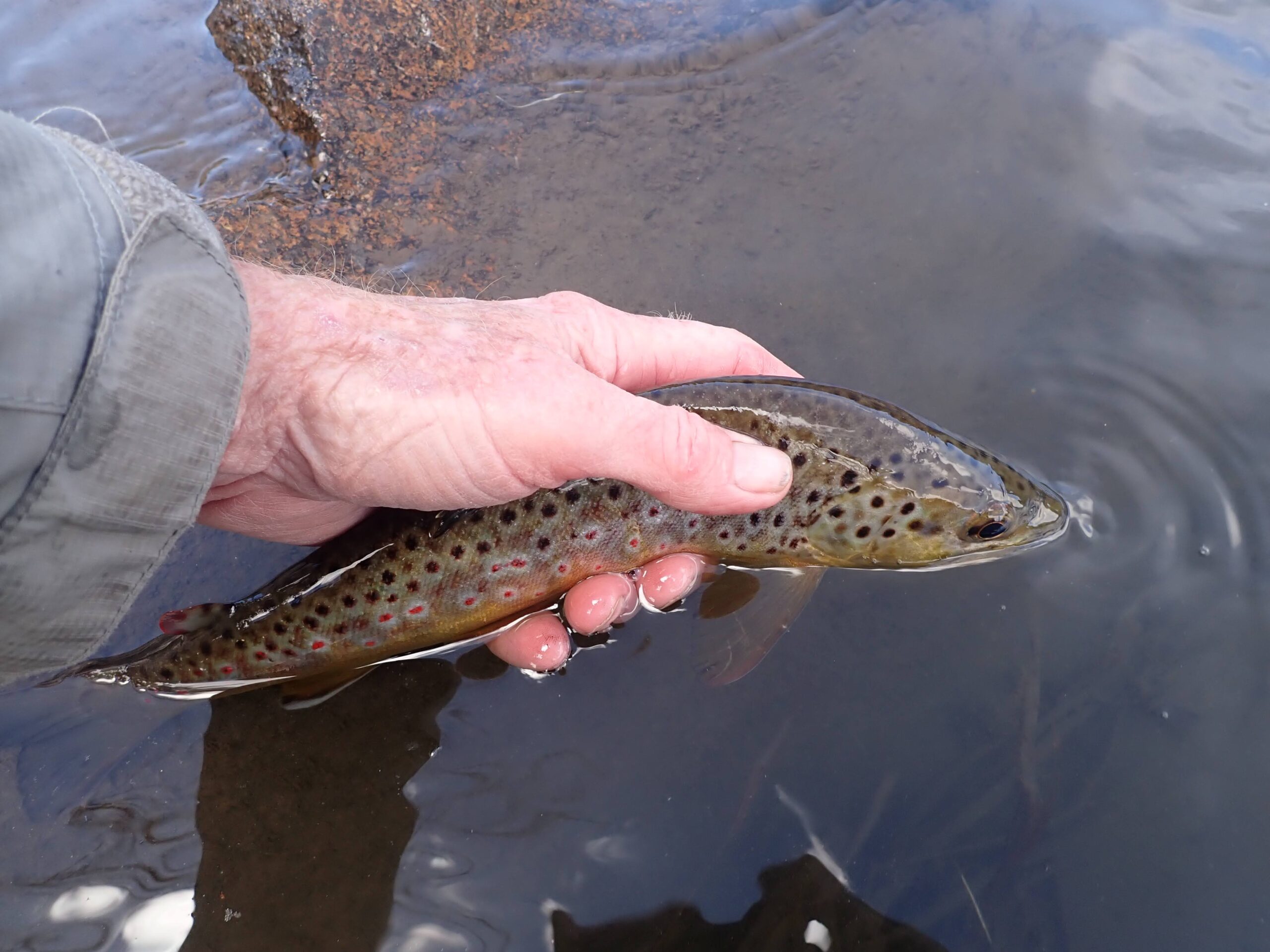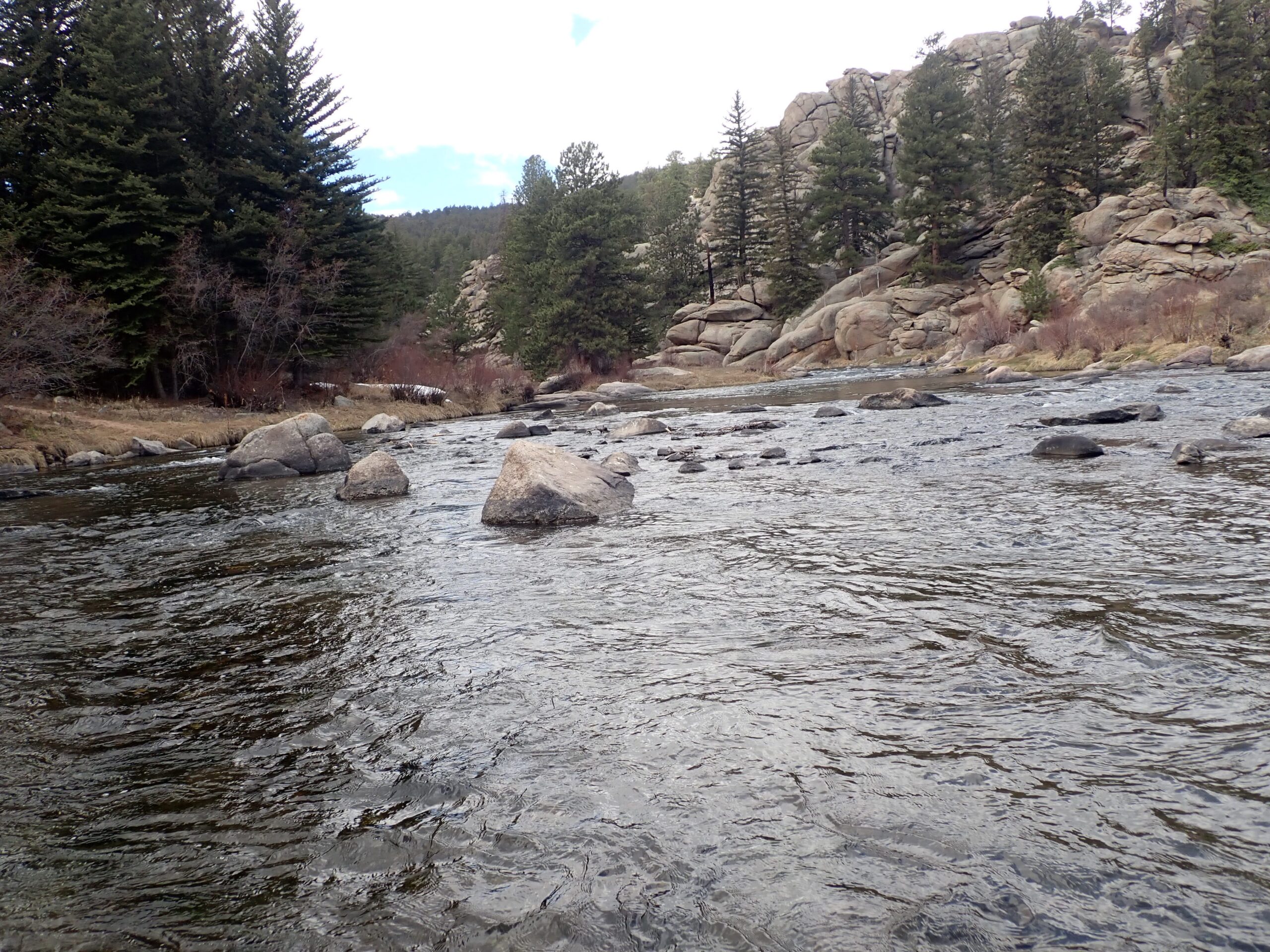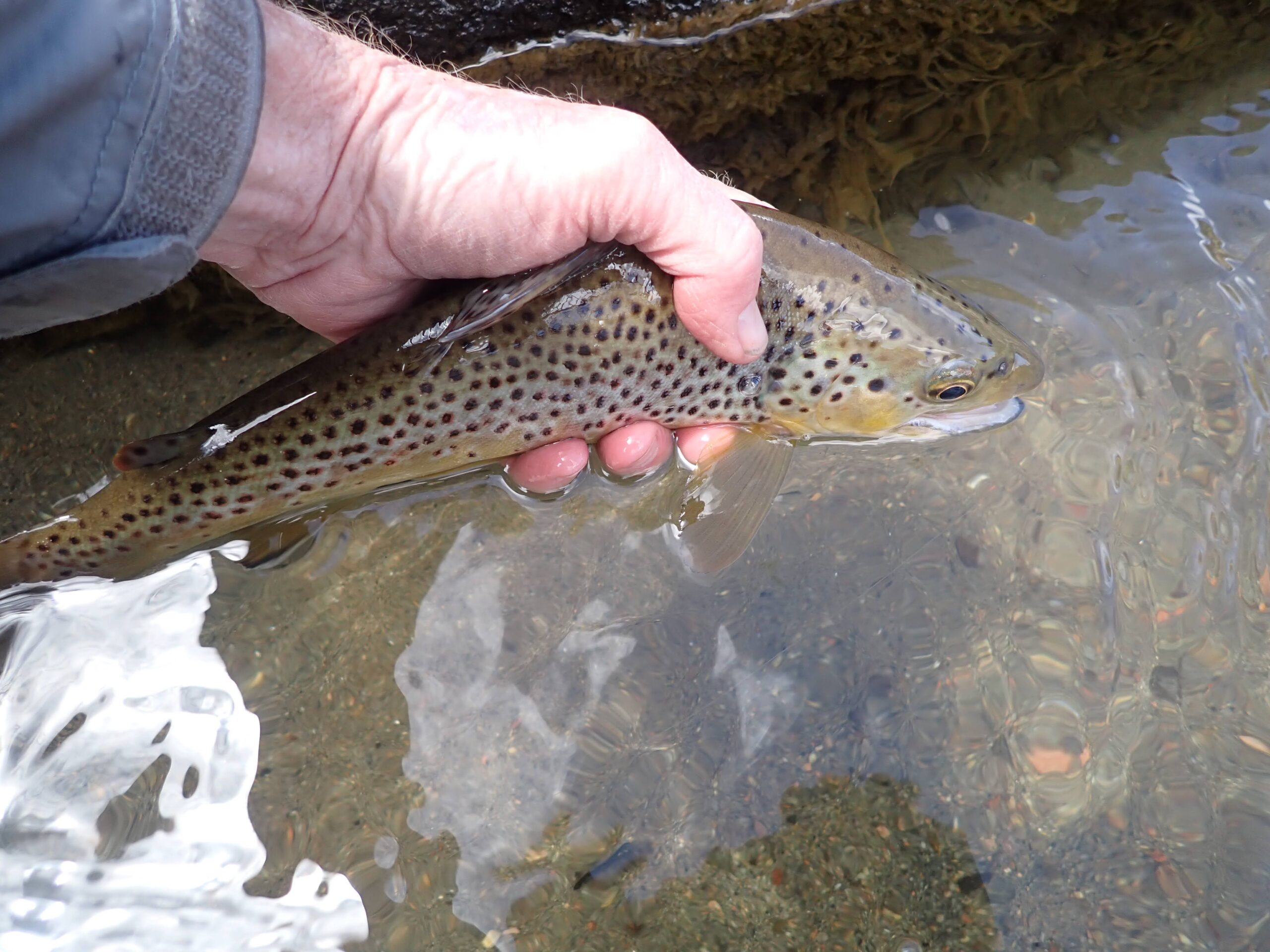Time: 11:00AM – 3:15PM
Location: Eleven Mile Canyon
South Platte River 05/13/2024 Photo Album
As a result of high winds, rain and a visit from my daughter I was unable to visit area streams between May 8 and May 13, 2024, so I was possessed with an abundant quantity of bottled up fly fishing energy. On Mothers’ Day, May 12, Jane expressed a desire to go for a hike in Rocky Mountain National Park. We fully expected to remain in the car, while we completed an auto tour with perhaps a short hike in our rain gear, as dark gloomy skies and steady precipitation were present at our home in Denver. Jane’s decision proved to be a huge winner, as the dreary skies parted to reveal blue skies and sunshine, when we drove west of Boulder, CO.
One of the reasons Jane chose RMNP was in order to enter the park without a reservation. The reservation system kicks off on May 24, so we were not restricted in any way. By the time we arrived at the Fall River entrance, the air temperature was in the mid to upper fifties, and the trails and pavement were completely dry. After looping by Sheep Lake and the alluvial fan, we drove on toward Bear Lake, but we detoured through Moraine Park, where we found a parking space in a huge mud puddle. We were surprised at the number of vehicles and park visitors given the adverse weather in Denver, when we departed.
We completed a 5.6 mile hike along the Big Thompson to The Pool and back, and a byproduct of the entire day was gaining unfiltered intelligence about the stream conditions in Rocky Mountain National Park. I checked out Fall River, the Big Thompson and Glacier Creek; and all three remained relatively low and clear and solid options for fly fishing.
I made plans to test the small streams in Rocky Mountain in the near term, but for Monday I had my eyes on the South Platte River at Eleven Mile Canyon. During my last trip to this fishery, I landed eighteen trout, and this represented my high water mark for 2024. Could I repeat this accomplishment? I was optimistic. The flows remained at roughly 130 CFS, and the weather was reasonable with a high of 61 degrees predicted. My only concern was the clarity of the river, since a fair amount of rain or snow hit Colorado over the weekend.
I arrived at my chosen roadside pullout by 10:30AM, and I immediately crossed the road to scan the river. I was a bit disappointed to note stained flows, but I decided to give it a test regardless of the clarity. I wore my light down North Face parka, and I avoided my hat with earflaps. If you follow this blog, you know that this was a major milestone for this 2024 fly fishing season for this avid angler. Once I was prepared, I crossed the road and walked downstream a bit to a crossing point, and by 11AM, I began casting from the bank opposite the road. I rigged my line with a size 8 yellow fat Albert, a beadhead black mini leech and a flesh colored San Juan worm. After a fifteen minute trial period with no response, I removed the mini leech and replaced it with a weighted 20 incher to obtain deeper drifts, and a bit later I swapped the San Juan worm for a beadhead pheasant tail. In the half hour between noon and 12:30PM, I finally achieved mild success, as I landed two brown trout and one rainbow trout. These were relatively small trout in the ten inch range; however, I was pleased to finally get on the board. Two trout gobbled the pheasant tail, and one nipped the 20 incher.
 First Fish of the Day
First Fish of the Day Rainbow Trout Before Lunch
Rainbow Trout Before Lunch
At 12:30PM I paused for lunch on a small island in the middle of the river. After lunch, I continued my progression up the river, until I quit a 3:15PM. At 1:00PM I was stationed next to a long deep run, and a dark cloud obscured the rays of the sun. As expected the low light density initialed some surface feeding, and sporadic rises evolved into fairly regular feeding. I jumped at the opportunity to fish dry flies, and I quickly cut off the fat Albert and nymphs, and I replaced them with a double dry with a peacock hippie stomper in front and a trailing CDC BWO. Five or six trout made their presence known, and I began to lob across and downstream casts with quite a few upstream reaches to keep the line upstream of the flies. Unfortunately my flies were mostly ignored, until one aggressive feeder slurped the hippie stomper! This was number five, and I was quite pleased to guide it into my net.
 Rising Trout to Blue Wing Olive Hatch in This Area
Rising Trout to Blue Wing Olive Hatch in This Area
While the sky remained darkened by the clouds, I rushed to release the trout, but then I decided to experiment with a soft hackle emerger fished in the surface film. On the fifth cast a trout grabbed the emerger, as it began to swing at the end of the drift, but I was slow to react, and the fish quickly earned its freedom.
Within minutes the clouds moved away and revealed the sun, and this weather change put an end to the hatch and the related feeding. I could see that it would be a while until the next significant cloud cover, so I reverted to the dry/dropper, and I rolled with the fat Albert, an ultra zug bug and a soft hackle emerger. The soft hackle emerger duped a small trout, and after a long lull, I replaced the soft hackle emerger with a beadhead hares ear, and the hares ear accounted for my last two trout to push my total fish count to eight.
 I Like This Pocket Water Section
I Like This Pocket Water Section
The last half hour was extremely slow with bright sunny skies, so I called it quits at 3:15PM and found a safe spot to cross the river to the steep bank on the opposite shoreline. I hoofed it back to the car and removed my gear. Monday was an average day in all aspects of fly fishing. I landed eight trout in four hours or two fish per hour, and this is a fairly average catch rate. The fish were all in the ten and eleven inch range. The weather was comfortable and the scenery was outstanding, so I regarded Monday, May 13 as a success. My next destination will, in all likelihood, be Rocky Mountain National Park, as I plan to take advantage of my scouting trip on Mothers’ Day.
Fish Landed: 8

 130 CFS and Slightly Stained
130 CFS and Slightly Stained Late Afternoon Catch
Late Afternoon Catch Scene of a Couple Rises
Scene of a Couple Rises First Trout Was a Brown
First Trout Was a Brown Home of the Wild Brown Next to the Log
Home of the Wild Brown Next to the Log Type of Water Where I Was Swinging and Lifting
Type of Water Where I Was Swinging and Lifting Took 20 Incher on the Swing
Took 20 Incher on the Swing Area Where I First Noticed the Hatch
Area Where I First Noticed the Hatch An Early Dry Fly Eater
An Early Dry Fly Eater Most of My Dry Fly Action Was Here
Most of My Dry Fly Action Was Here A Fine Wild Brown Trout
A Fine Wild Brown Trout Hatch Feeder
Hatch Feeder















 Injured Bird
Injured Bird